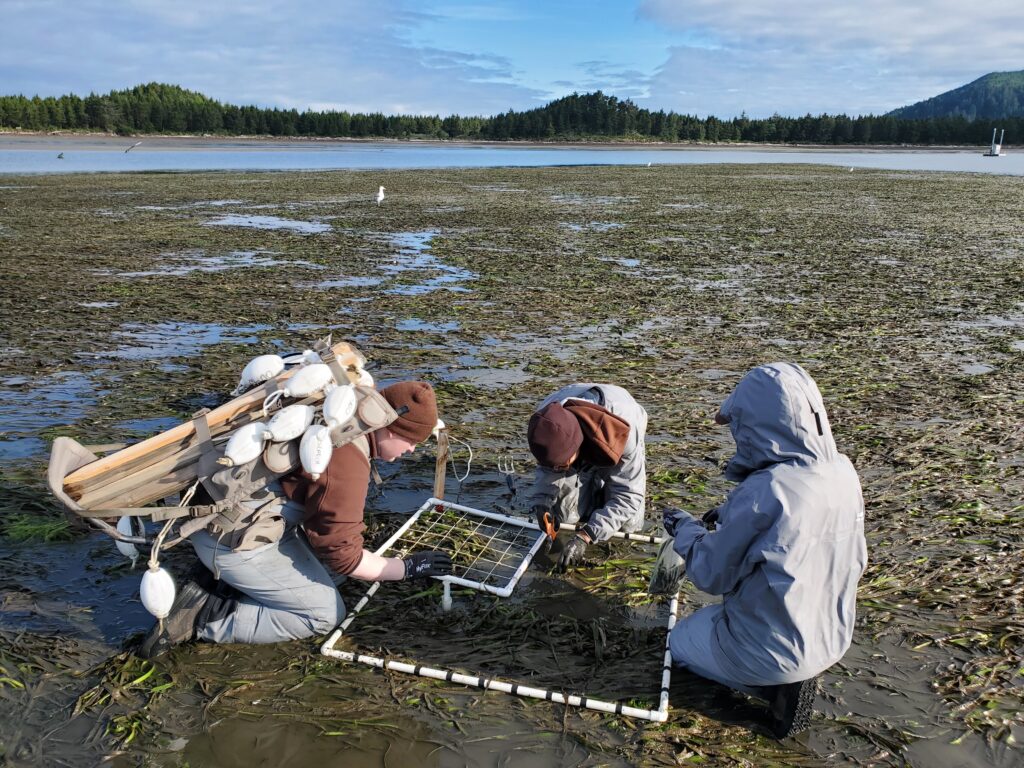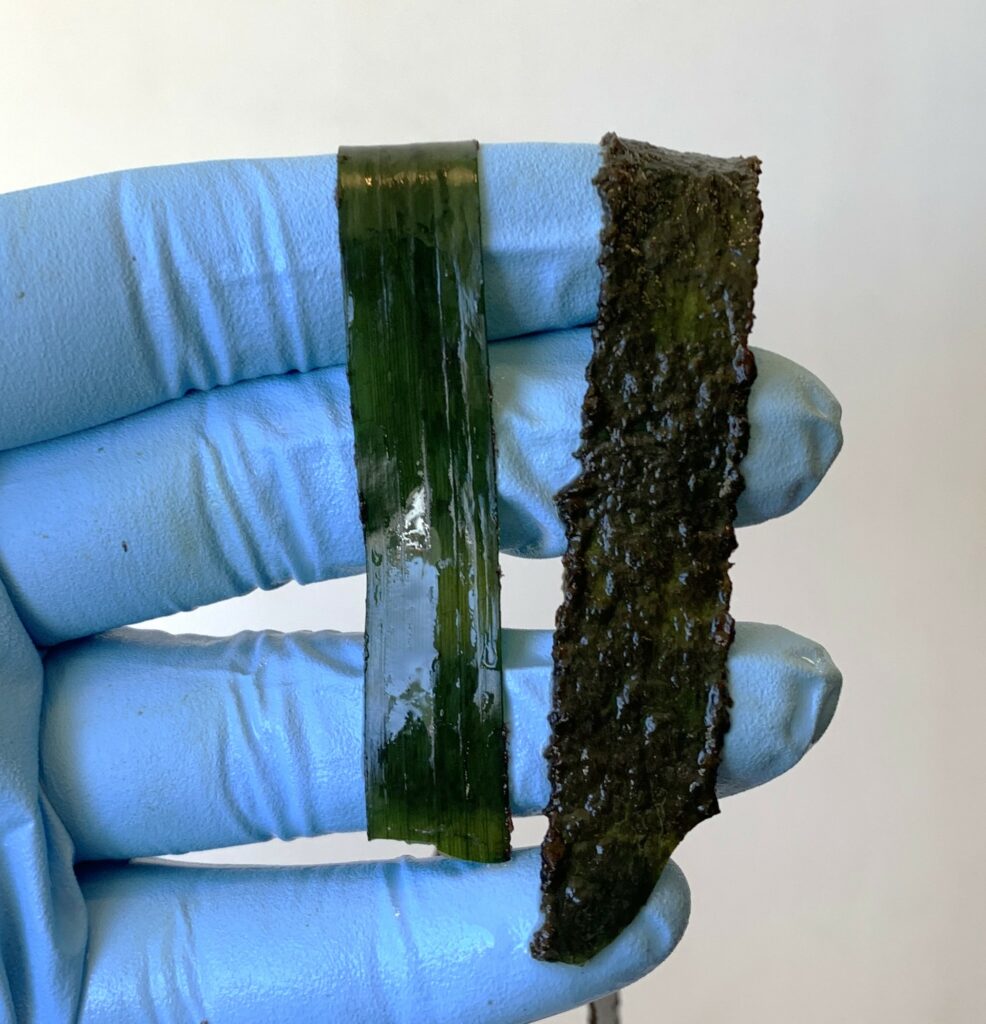Hello everyone,
Four weeks down like that! Working on the SEACOR (Shellfish and Estuarine Assessment of Coastal Oregon) team has been incredible. We are collecting data on the four major bay clam species in Tillamook Bay to inform shellfish catch limits. This project involves lots of fieldwork on the tide flats of the bay, digging up clams, crab, and shrimp!
There’s no typical day for the SEACOR team. We work on the ocean’s schedule and try to go out during low tide so we can sample the most sites. This means some days start at 4:00 AM while others not until 9:00 AM! We have a variety of sampling methods, RAM (Rapid Assessment Method), DAM (Detailed Assessment Method), and Megacoring. Each site is RAM sampled which involves recording habitat data and collecting eelgrass, then raking about 15 centimeters (six inches) looking for clams (Photo 1). Some of our sample sites are further examined using the DAM method. This involves digging approximately 30 centimeters (12 inches) down. Some sampling sites are covered by too much water for us to DAM sample, so we use a giant pump to “megacore”. The megacoring pump basically acts as a vacuum that traps all the shellfish in a mesh bag and spits out the sediment (Photo 2). Species such as cockle clams are found at the surface whereas others such as butter clams and gaper clams are found at deeper depths, which is why we like to use a variety of sampling methods. The last few hours of our day are spent measuring all the shellfish we collect.



Since we are living in a hotel in Tillamook during the week, we all get tired of microwave meals pretty quickly. That’s why we go out for a team dinner at least once a week! We’ve become loyal customers of “La Providencia,” a Mexican food truck in Tillamook (Photo 3). During downtime, I love to facetime my friends and family back home.
While I really enjoy the work, my least favorite part is stripping eelgrass of epiphytes (Photo 4). Epiphytes are organisms that grow on plants. Algae and eggs are usually the epiphytes found on eelgrass. It’s a real time-consuming process that can feel tedious. However, it’s a job that must be done for accurate data on eelgrass biomass!

My favorite part of the job is simply working in the ocean. It’s been a dream to work in this ecosystem that’s been inaccessible to me growing up in the Midwest. While I spent so much time reading and learning about marine ecosystems back home, it’s remarkable to learn first-hand with so many intelligent biologists on the SEACOR team! (Photo 5).


